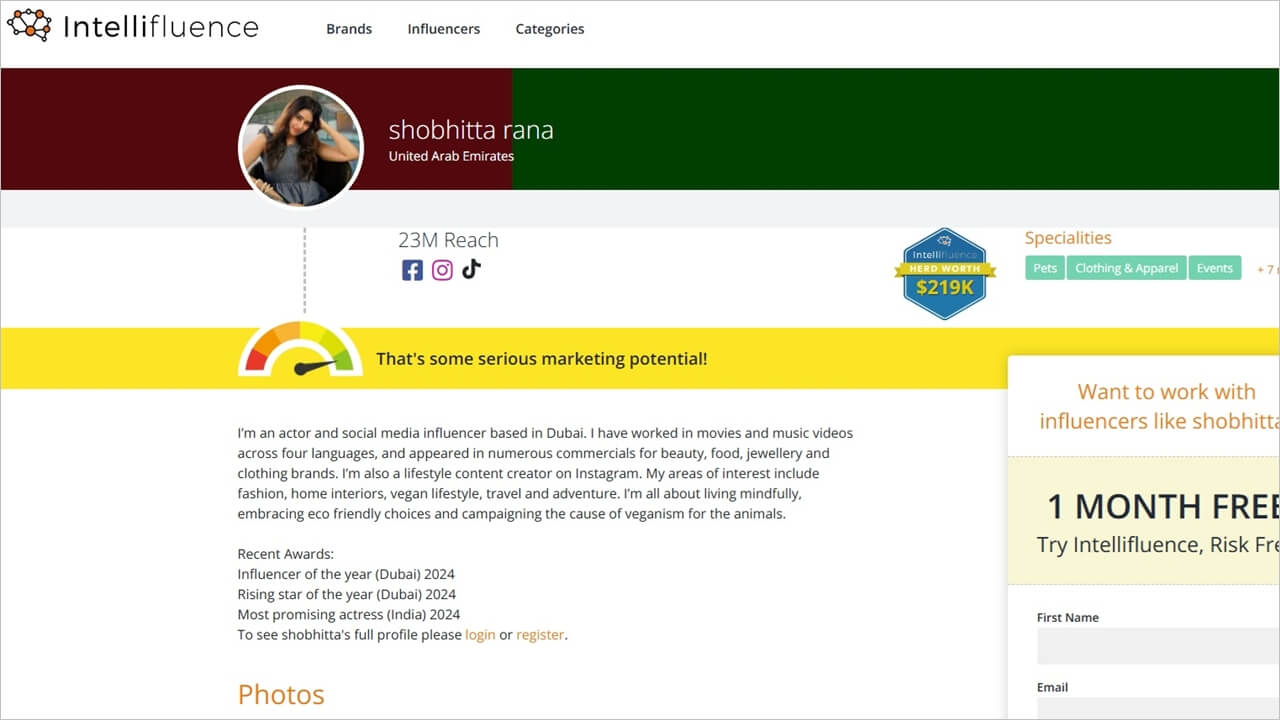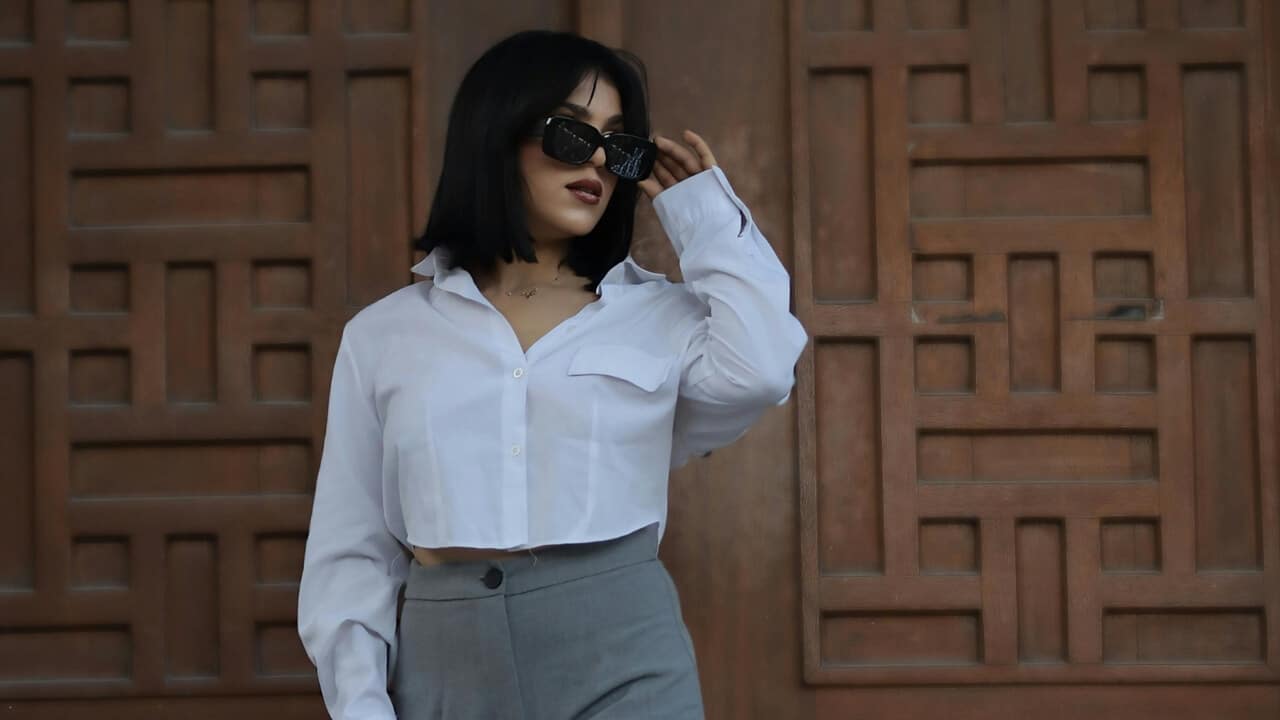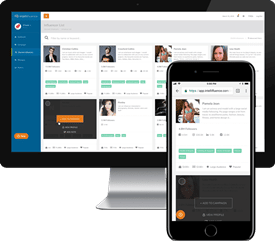So You Want to Be a Fashion Influencer? Let’s talk about your why first.
Before we discuss hashtags, brand deals, or how to start fashion blogging on Instagram, there’s a question that you need to answer:
Why do I actually want to be a fashion influencer?
Is it because you love styling clothes and feel a spark of creativity when you artfully put an outfit together?
Is it because you’re drawn to the creativity of photography, aesthetics, and self-expression?
Or is it because you’ve seen others build incredible careers through influencer marketing in fashion and you want a piece of the opportunity?
Be honest with yourself. There’s no wrong answer—just clarity. The fashion space is crowded but not saturated, competitive but not impenetrable. What matters most is the reason you want to show up every day. Passion is fuel, but motivation is the steering wheel, and you need both.
Let’s pose another question:
If no one follows you for six months, or even a year, would you still enjoy creating fashion content?
Some of the strongest voices in the industry today—people with millions of followers—started with tiny audiences and no promise of visibility. What carried them wasn’t fame; it was fascination. They loved colors, silhouettes, fabrics, thrift hauls, vintage markets, runway inspiration, or, for some, the thrill of crafting a visual world that felt uniquely theirs.
Before you take the leap, take a moment to ask yourself:
What excites me about fashion?
What style am I naturally drawn to?
Do I want to teach? Inspire? Entertain? Document?
Am I willing to show up consistently even if the reward isn’t immediate?
Your answers form your foundation. And that foundation will determine not just how you grow but how far you’ll go.
With that groundwork in place, let’s talk about the practical side—because if you’re feeling the push toward how to start a fashion career through content creation, you’ll want a roadmap that’s both realistic and energizing.
A Quick Framework: Is Becoming a Fashion Influencer Right for You?
Not everyone who loves fashion needs to become a content creator. And that’s perfectly fine. But if you’re trying to determine whether this path fits, here’s a simple framework to help you gauge your alignment.
1. Do you enjoy creating consistently?
Fashion influencing isn’t just about outfits—it’s about storytelling, images, editing, captions, interaction, and evolution. If the creative process energizes you, you’re halfway there.
2. Are you open to being visible?
You don’t have to overshare. But you do need to show up regularly with your face, your voice, and your perspective. Confidence grows with practice, but willingness is key.
3. Are you interested in community?
Fashion influencers aren’t broadcasters—they’re connectors. Engagement, conversation, and relationship-building matter.
4. Are you willing to iterate?
No one’s first 50 posts are their best. The people who succeed stick around long enough to improve.
5. Can you embrace your own style rather than copy someone else’s?
This is huge. Followers don’t want clones—they want you. You can and should take inspiration, but originality is your currency.
Think about these seriously. If your honest answers lean toward yes, keep reading. You’re probably ready, or at least ready enough to begin.
Six Tips to Get Started as a Fashion Influencer
Now let’s break the process down into six actionable, realistic steps you can start implementing today.
1. Get Confident in Your Own Style—It’s Your Differentiator
This is your secret weapon. Your style is the one thing no one else can perfectly replicate. But how do you discover it?
Ask yourself:
What outfits make me feel most confident?
What do people compliment me on?
What pieces do I naturally gravitate toward—structured coats, bold colors, neutrals, vintage pieces, streetwear?
Whose style inspires me, and what about it resonates?
Spend a week documenting your outfits, even if you’re not posting them yet. Notice patterns, preferences, and combinations that feel most “you.” Because here’s the truth: in influencer marketing in fashion, the accounts that grow the fastest are not always the most conventionally beautiful—they’re the ones with unmistakable identity. Think of style as your signature. Own it. Lean into it. Let it evolve.
2. Start Posting Even Before You Feel Ready
Many aspiring fashion influencers wait for the perfect camera, the perfect backdrop, the perfect confidence. Perfection is a delay tactic dressed up as preparation. Start with what you have.
Successful creators like Matilda Djerf built huge audiences with natural light, simple backgrounds, and authenticity long before they had professional photoshoots. Emma Chamberlain, while not a fashion influencer first, became a fashion force with candid, imperfect, personality-driven content. Wisdom Kaye, known for high-fashion TikTok looks, began with simple, at-home videos where his creativity—not production—carried the weight.
Your first posts don’t need to go viral; they just need to exist. They’re your reps. They’re your practice. They’re your stepping stones. When you start early, you start learning early.
3. Create the Type of Content That Performs Best (and Why It Works)
Fashion content thrives on three pillars:
Education
People love learning something new—styling tips, how-to guides, seasonal trends, color theory, or “three ways to wear one blazer.”
Inspiration
Outfit-of-the-day (OOTD) shots, aesthetic moodboards, lookbooks, thrift hauls, “get ready with me” videos—these help followers imagine possibilities.
Relatability
This is the one people misunderstand. Relatability doesn’t mean being ordinary; it means being human. Showing your thought process, the struggle to style one tricky piece, the thrift-store hit or miss, the behind-the-scenes moments.
Ask yourself with every post:
What is the value here? Is it helping someone look better, feel inspired, or get to know me better? Those three levers—help, inspire, connect—are what keep people coming back.
4. Master Engagement (It’s Not Optional Anymore)
Engagement is oxygen in the influencer world. And it’s more than just replying “thank you!” to comments.
Here’s what strong engagement actually looks like:
• Responding to comments with thought, humor, or personality.
• Asking questions in your captions to spark conversation.
• Responding to DMs when people ask for advice.
• Commenting thoughtfully on other creators’ posts.
• Creating polls, quizzes, or Q&As in Instagram Stories.
• Sharing behind-the-scenes insights that make people feel like insiders.
Why does this matter?
Because platforms reward genuine interaction. And brands look at your engagement rate more than your follower count.

Featured Influencer: Louis Polo
I’m a Lifestyle blogger with a deep inclination towards fashion and style. Sharing what inspires me with the intention to inspire others! I’ve had the pleasure to work with brands such as Armani Beauty, Amazon, Google, Vince Camuto, Fossil, Dove, and many blog and social media channels are lifestyle based and conduct a representation of clean and minimalist style. I’m an advocate for body positivity, expressing your inner self through fashion and creating a style base that embraces who you are.
A micro-influencer with 7,500 highly engaged followers is often more valuable than someone with 75,000 passive ones. So, are you ready to treat engagement as part of your creative practice instead of a chore? If so, you’re positioning yourself miles ahead of many beginners.
5. Position Yourself for Brand Collaborations (Even Early On)
People often ask: “At what point should I start approaching brands?” The real question is: At what point can you articulate your value? That can happen earlier than you think. Here’s how to position yourself well:
Curate your feed like a portfolio
Even with fewer than 1,000 followers, you can show:
• consistent aesthetic
• clear niche
• strong personal style
• clean photography
• thoughtful captions
• evidence of engagement
Brands want to see professionalism, not perfection.
Tag brands organically
Love a pair of boots? Tag the brand. Wearing your favorite thrifted blazer? Mention the store. Using a new handbag? Show it off. Brands notice organic love long before they’re ready to pay for sponsored content.
Use platform features wisely
Reels and TikToks often outperform static images and can catch the eye of brand managers faster. Carousels do well on Instagram for storytelling. Pinterest is powerful for aesthetic visibility. The more you show up in multiple formats, the stronger your digital footprint.
Build a mini-media kit early
It doesn’t need to be fancy—just a clean PDF with:
• your bio
• your niche
• sample content
• audience demographics
• engagement rate
• contact info
When a brand does approach you (and they will), you’ll look prepared—not scrambling.
Understand value exchange
Sometimes the first few deals are gifted collaborations. That’s fine, but choose wisely. Don’t accept freebies you wouldn’t buy yourself. Your authenticity becomes your long-term earning power.
Some influencers—Chriselle Lim, for example—positioned themselves by consistently creating thoughtful, editorial-quality content long before major brands approached. Others, like Bretman Rock, caught brands’ attention not through polish but personality. Both approaches work; the key is clarity in what you bring.
Treat It Like a Career, Not a Side Fantasy
If you’re serious about how to start a fashion career through influencing, you need to treat it with intention. Think about:
• your posting schedule
• your long-term brand identity
• the platforms you’ll prioritize
• the skills you’ll develop
• the relationships you’ll nurture
• the stories you want to tell
Ask yourself:
What kind of fashion influencer am I trying to become?
High-fashion editorial?
Streetwear-focused?
Thrift-and-vintage?
Minimalist?
Experimental?
Luxury?
Affordable-everyday style?
Sustainable fashion?
Body-positive?
Niche-specific (like petites, tall women, plus-size, modest fashion, edgy maximalism)?
Your lane doesn’t have to be narrow—but it does have to be recognizable.

Intellifluence Influencer Shobhitta Rana
Look at how others carved their paths:
• Aimee Song (Song of Style) blended interior design, lifestyle, and fashion, becoming a pioneer in early fashion blogging.
• Intellifluence influencer Shobhitta Rana built her presence through blending fashion with travel and lifestyle content.
• Bryce Xavier used bold, editorial looks to stand out on TikTok.
• Jenn Im found her groove through approachable everyday style paired with personality-driven videos.
None of them became huge because they were trying to be like someone else. They each took what made them unique and magnified it. You can do the same.
So Where Does Instagram Fit Into All This?
Many people who ask how to start fashion blogging on Instagram assume they need perfect photos, a DSLR camera, or a downtown penthouse aesthetic. In reality:
• natural light is enough
• an iPhone is enough
• your bedroom mirror is enough
• your backyard fence is enough
What matters most on Instagram today is value and identity. Your feed is your billboard. This is the top-level aesthetic that brands and new followers see first.
Your Stories represent your personality. This is where your voice, Q&As, daily life, and behind-the-scenes moments shine.
Your Reels are your discoverability engine. This is where the algorithm can amplify you far beyond your current following.
Think of Instagram as a three-part ecosystem. If you use all three pieces intentionally, you give yourself the best chance at visibility.
What About TikTok, Pinterest, and YouTube?
You don’t have to be everywhere. But you should understand the power each platform offers.
With TikTok, there’s reach and trend culture. Short-form video thrives here. Outfit changes, transitions, thrift hauls, quick styling tips, comedic fashion content, or runway recreations do incredibly well.
Pinterest is an inspiration engine. This is where aesthetic content lives forever. Carousels, clean outfit photos, and moodboards can drive traffic for months or years.
YouTube offers depth and storytelling capabilities. Long-form videos—lookbooks, seasonal guides, shopping vlogs, “clean out my closet with me”—help create a deeper bond with your audience. Many successful influencers—like Ashley (bestdressed)—blew up on YouTube first, then cross-pollinated their audiences to Instagram. Others—like Wisdom Kaye—went viral on TikTok and built credibility through editorial partnerships.
Your platform strategy should reflect your strengths. If you love video editing, YouTube or TikTok might be natural. If you prefer photography and clean visuals, Instagram and Pinterest might be stronger starting points.
The Mindset Shift: From “Posting Outfits” to “Creating Value”
Influencing is not about showing off your clothes. It’s about showing people what’s possible for them. Big difference. Anyone can post a cute outfit, but not everyone can:
• teach someone to dress for their body shape
• help them find confidence through fashion
• curate a sustainable capsule wardrobe
• showcase creative thrift flips
• translate runway trends into everyday looks
• demonstrate three ways to wear one piece
• encourage experimentation
• make fashion feel accessible, fun, or empowering
Value is how you stand out—especially early. Think about your ideal follower: Who are they? What are they struggling with? What do they want to learn? If you can answer those questions, you can craft content that resonates deeply.
Finding Your First 1,000 Followers (Without Feeling Like You’re Shouting Into the Void)
Growing an audience in fashion requires intention, but it doesn’t have to feel overwhelming. Here’s a starter roadmap:
1. Post consistently (3–5 times a week).
Quality matters, but consistency compounds.
2. Use a mix of Reels, carousel posts, and stories.
The algorithm favors variety.
3. Engage with other creators in your niche daily.
Thoughtful comments—not just emojis.
4. Collaborate with beginners at your level.
Cross-promotion helps both of you grow.
5. Lean into what performs well—but keep experimenting.
Data reveals patterns; creativity keeps you expanding.
6. Don’t obsess over numbers.
Focus on connection, not validation. Your first 1,000 followers are the hardest. After that, momentum builds.
The Sustainable Path Forward: Creativity, Community, and Identity
Fashion influencing isn’t a quick hack. It’s a blend of creativity, community-building, persistence, and self-awareness. But if you love fashion, if you crave self-expression, if you’re willing to grow publicly and imperfectly—this is a world with real opportunity. You can turn this into a career. You can build partnerships with brands you admire. You can develop a community that values your perspective. You can enter the broader ecosystem of influencer marketing in fashion with confidence, clarity, and momentum.
But you can also simply start. One outfit. One reel. One idea you can’t get out of your head. One moment of pressing “post” even when you’re not entirely sure. You can join a platform such as Intellifluence in order to collaborate with brands and grow as an influencer. The creators we admire today all began with that same leap. And maybe the only thing standing between where you are now and where you want to be—is that first brave step.

SallyBot is committed to helping users get the most out of Intellifluence. By helping brands create campaigns, providing unparalleled customer service and offering useful advice, nothing makes SallyBot happier than hearing she is liked… Really, really liked.






